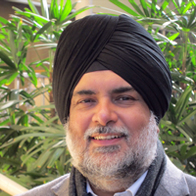Dear Reader
The London attack on the British Parliament using a vehicle as a weapon was yet another reminder to the western world that Europe continues to be the hotbed of terrorist activity. We are seeing Islamic radicals use everyday objects and vehicles to maim and kill ordinary citizens and spread terror and hatred with increasing impunity, in many countries of Europe. This has the authorities at their wits end, trying to figure out ways of detecting and stopping all such attacks in time.
To recall, it was in Nice, France, in July 2016, that a Tunisian national plowed a 19-ton truck into revellers celebrating the Bastille Day holiday, as they watched fireworks on the French Riviera, leaving 86 people dead. This was the deadliest ever vehicle attack on European soil. In December 2016, in Germany, again a Tunisian national drove a truck into a Christmas market in central Berlin, killing 12 people. Last month, on March 22, a year after the ISIS-claimed Brussels bombings, an attack claimed five lives when a person named Khalid Masood rammed a car into civilians on Westminster Bridge, in the heart of London.
It is obvious that the law enforcement authorities need to have a tight grip on the availability and use of explosives which traditionally have been the favourite method of terrorists. Many of today’s self radicalised and motivated individuals are resorting to mounting attacks on unsuspecting citizens with unconventional weapons, thereby throwing the police into a tizzy trying to find early warning signs to preempt and thwart such attacks.
Brian Michael Jenkins, an expert on terrorism and transportation security, says that terrorism is defined as violence—actual or threatened—calculated to create fear and alarm or, in a word, terror. Terrorism is primarily aimed at the people watching—the identity of the actual victims is often irrelevant to the terrorists. Its effects, above all, are intended to be psychological. Terror causes people to exaggerate the strength of the terrorists and the threats they pose. Terrorism is much more a matter of perceptions than of easily quantifiable risks or losses.
This observation has profound implications for security. To successfully create terror, terrorists do not have to overcome security measures. They simply have to be good at creating terror. Terrorism (the actions of terrorists) and terror (the psychological effects of terrorist actions) are separate domains. Even low levels of terrorism can, and do, cause high levels of alarm. Therefore, terrorists with limited capabilities and minimal resources can achieve disproportionate effects.
This is especially true in the context of today’s media-drenched society. Media coverage greatly extends the reach and effects of terrorism. If terrorism is a theater, contemporary communications, through mass and social media, enables terrorists to reach an audience of global proportions almost instantaneously. The mass media also tends to increase the drama by repeatedly broadcasting the visuals that terrorists choreograph.
It is believed that ISIS used to send as many as 90,000 tweets per day and make 36 new videos of 20 minutes duration each day to post on social media! And while tweeted images and online videos of beheadings and immolations draw the biggest headlines, the pro-ISIS propaganda stream is much broader, full of visions of a resurgent Islam seeking soldiers in its cause.
This use of mass media and professional movie making techniques is doing more harm than is apparent. When a follower of moderate Islam will convert into a self radicalised terrorist, no one knows. But the results can be seen: individuals with no criminal records, who mow down pedestrians with vehicles. Perhaps it’s high time that we redraw our anti radical Islam strategy to include fighting the fire of Social Media War with Social Media Water as a strong option!
Till we meet next month, Cheers and Happy Reading.
G B Singh
Email: editor@securitytoday.in
Follow me on @EditorGB
Connect with me on Linkedin






